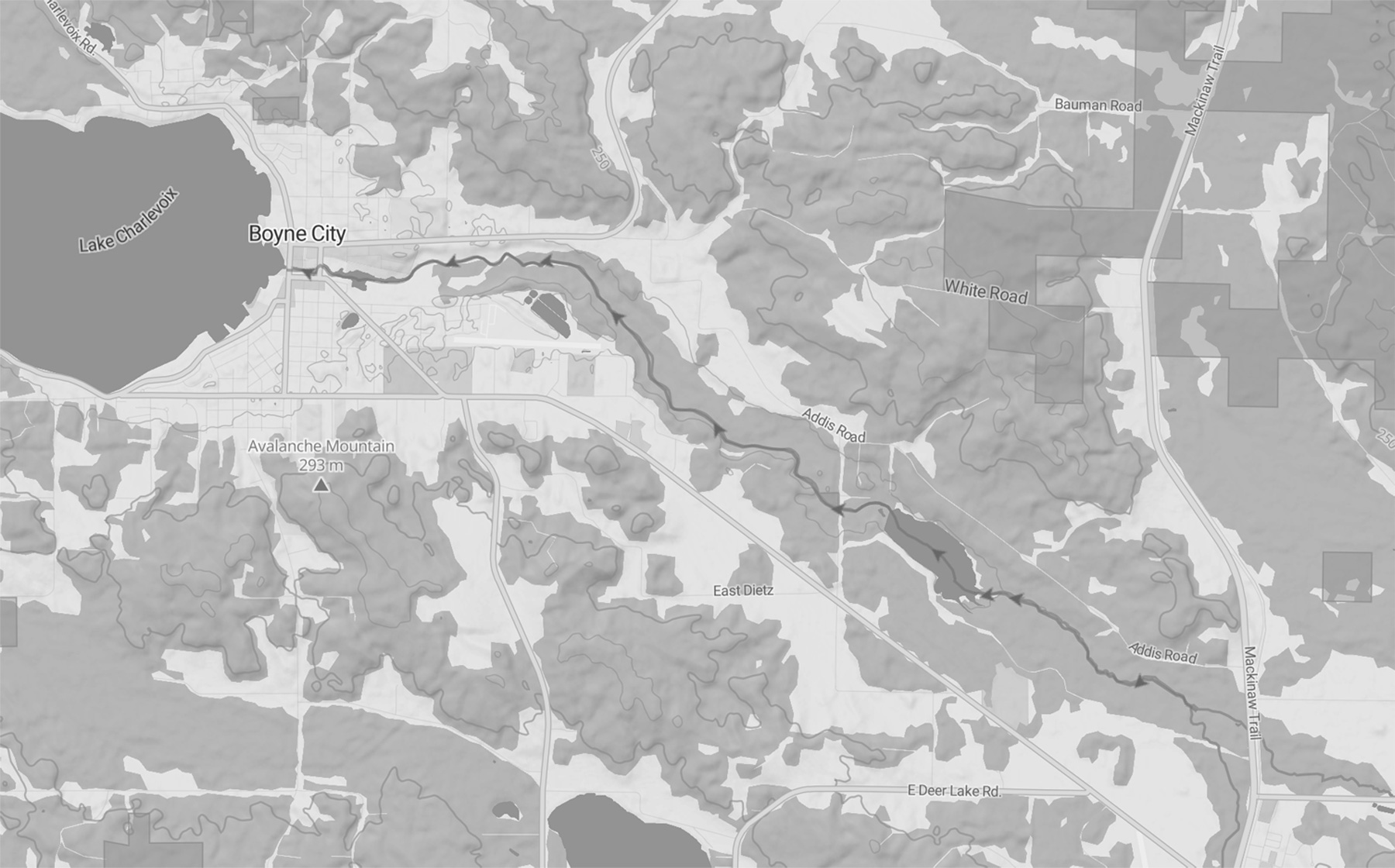Length:
The river’s main stream is 5.6 miles from the Lake Charlevoix mouth to junction of the north and south branches just north of Boyne Falls.
The north branch is 5.9 miles from the river junction in Boyne Falls to its source just west of Thumb Lake.
The south branch is 10.5 miles from the river junction in Boyne Falls to its source just south of Elmira.

Watershed:
The Boyne River watershed is 63 sq. miles, bordered by the Bear River to the north, the Sturgeon River to the east, the AuSable and Manistee rivers to the south, and the Jordan River to the west-southwest.
Dams:
There are two man-made dams on the river, up river at Dam Road and under M-75 in Boyne Falls.
Fish:
Brown trout and steelhead are stocked by the Michigan DNR. The most abundant species are rainbow, brown and brook trout, chinook, Atlantic and coho salmon, white suckers, large and small mouth bass, rockbass, bluegills, creek chubs and yellow perch.
DNR Fisheries Study 2012
DNR Fisheries Study 2017
The entire Boyne River is classified as a designated trout stream by the Michigan DNR. Fragmented by two dams, the main stem from the dam (east of Dam Road) west to the river mouth is a Type 4 trout stream, and upstream of the dam is a Type 1 trout stream.
Paddling:
Boyne City is an enjoyable 1-2 hour paddle from Dam Road to Lake Charlevoix. Take outs are on River St. upstream from the Mill Pond, in Old City Park under the East Street Bridge, and at the public marina in Veterans Park on Lake Charlevoix.
Birds:
Riverside Park on Spring Street, Boyne City, is on the Sunset Coast Birding Trail. Along the river are many species including great blue herons, green herons, owls, songbirds and water fowl.
History:
John and Harriet Miller, Irish immigrants and Boyne City’s first permanent settlers in 1856, named the river flowing there after the revered “River Boyne” in their homeland. Over the next 100-plus years, the river provided water and food, and was used for moving lumber industry logs, dumping refuse, and other activities damaging the environment. Trees were downed allowing water temperature to rise. These actions led to the demise of the grayling trout, and left business and household objects in the Mill Pond that occasionally surface. Today rivers are protected and the Friends help ensure the Boyne River stays safe and clean.
